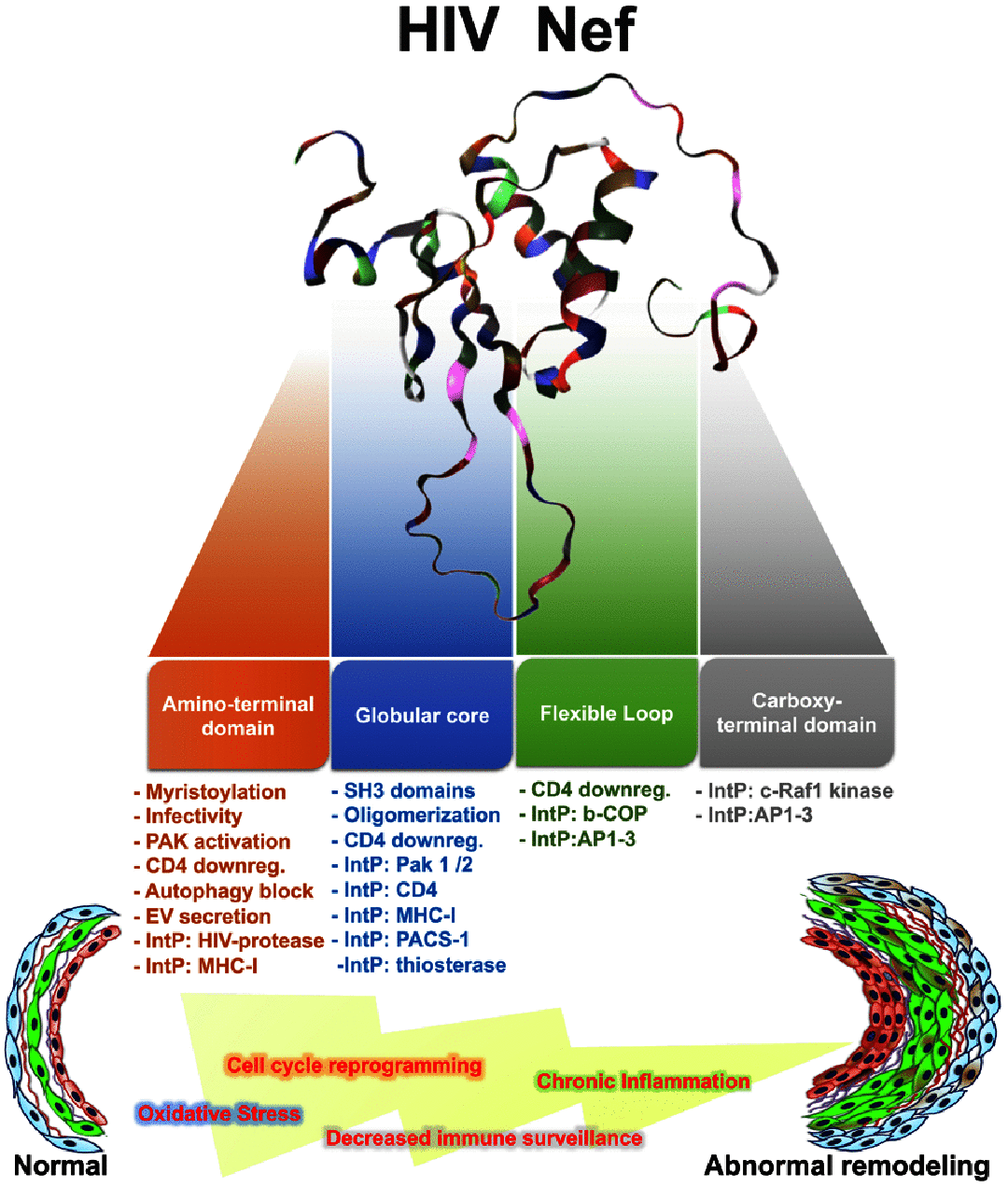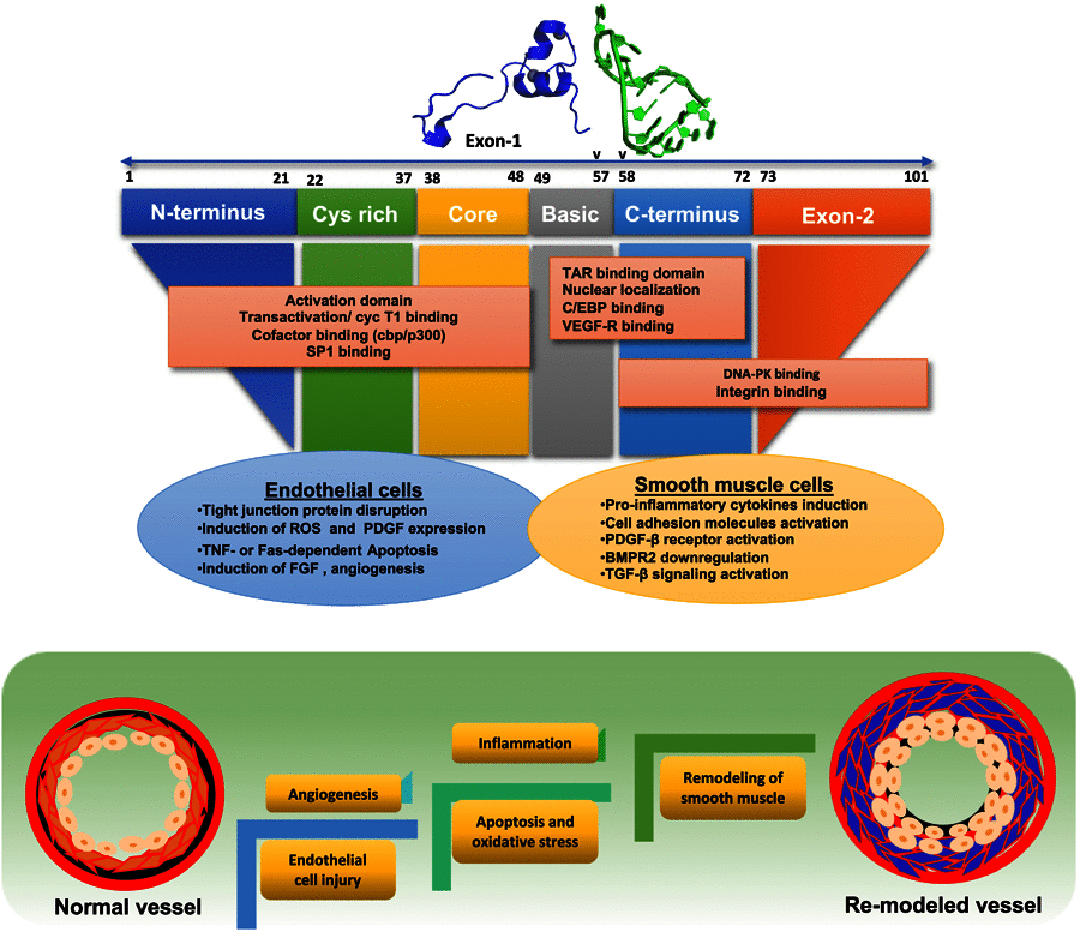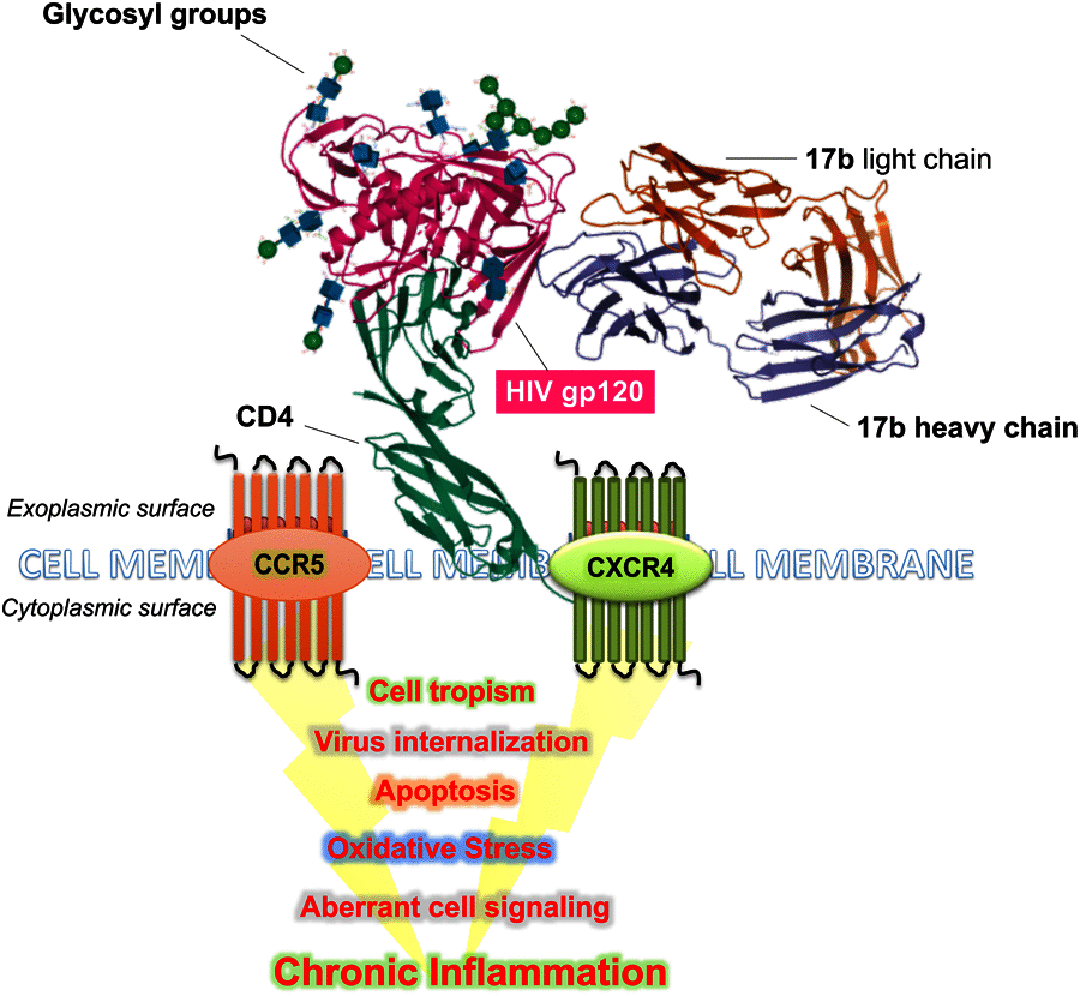Impact of human immunodeficiency virus on pulmonary vascular disease
- PMID: 34285903
- PMCID: PMC8272407
- DOI: 10.21542/gcsp.2021.12
Impact of human immunodeficiency virus on pulmonary vascular disease
Abstract
With the advent of anti-retroviral therapy, non-AIDS-related comorbidities have increased in people living with HIV. Among these comorbidities, pulmonary hypertension (PH) is one of the most common causes of morbidity and mortality. Although chronic HIV-1 infection is independently associated with the development of pulmonary arterial hypertension, PH in people living with HIV may also be the outcome of various co-morbidities commonly observed in these individuals including chronic obstructive pulmonary disease, left heart disease and co-infections. In addition, the association of these co-morbidities and other risk factors, such as illicit drug use, can exacerbate the development of pulmonary vascular disease. This review will focus on these complex interactions contributing to PH development and exacerbation in HIV patients. We also examine the interactions of HIV proteins, including Nef, Tat, and gp120 in the pulmonary vasculature and how these proteins alter the endothelial and smooth muscle function by transforming them into susceptible PH phenotype. The review also discusses the available infectious and non-infectious animal models to study HIV-associated PAH, highlighting the advantages and disadvantages of each model, along with their ability to mimic the clinical manifestations of HIV-PAH.
Copyright ©2021 The Author(s).
Figures



Similar articles
-
An Outlook on the Etiopathogenesis of Pulmonary Hypertension in HIV.Cureus. 2022 Jul 28;14(7):e27390. doi: 10.7759/cureus.27390. eCollection 2022 Jul. Cureus. 2022. PMID: 36046315 Free PMC article. Review.
-
HIV-1 Nef is associated with complex pulmonary vascular lesions in SHIV-nef-infected macaques.Am J Respir Crit Care Med. 2006 Aug 15;174(4):437-45. doi: 10.1164/rccm.200601-005OC. Epub 2006 May 25. Am J Respir Crit Care Med. 2006. PMID: 16728715 Free PMC article.
-
Enhanced autophagy in pulmonary endothelial cells on exposure to HIV-Tat and morphine: Role in HIV-related pulmonary arterial hypertension.Autophagy. 2016 Dec;12(12):2420-2438. doi: 10.1080/15548627.2016.1238551. Epub 2016 Oct 10. Autophagy. 2016. PMID: 27723373 Free PMC article.
-
Risk of echocardiographic pulmonary hypertension in individuals with human immunodeficiency virus-hepatitis C virus coinfection.Ann Am Thorac Soc. 2014 Dec;11(10):1553-9. doi: 10.1513/AnnalsATS.201405-225OC. Ann Am Thorac Soc. 2014. PMID: 25375659 Free PMC article.
-
From viral infection to pulmonary arterial hypertension: a role for viral proteins?AIDS. 2008 Sep;22 Suppl 3:S49-53. doi: 10.1097/01.aids.0000327516.55041.01. AIDS. 2008. PMID: 18845922 Review.
Cited by
-
Interplay between Lung Diseases and Viral Infections: A Comprehensive Review.Microorganisms. 2024 Oct 8;12(10):2030. doi: 10.3390/microorganisms12102030. Microorganisms. 2024. PMID: 39458339 Free PMC article. Review.
-
Successful treatment of pulmonary hypertension due to HIV infection and amphetamine snorting: a case report.Front Med (Lausanne). 2025 Apr 23;12:1556041. doi: 10.3389/fmed.2025.1556041. eCollection 2025. Front Med (Lausanne). 2025. PMID: 40337277 Free PMC article.
-
An Outlook on the Etiopathogenesis of Pulmonary Hypertension in HIV.Cureus. 2022 Jul 28;14(7):e27390. doi: 10.7759/cureus.27390. eCollection 2022 Jul. Cureus. 2022. PMID: 36046315 Free PMC article. Review.
-
Analysis of MicroRNA Cargo in Circulating Extracellular Vesicles from HIV-Infected Individuals with Pulmonary Hypertension.Cells. 2024 May 21;13(11):886. doi: 10.3390/cells13110886. Cells. 2024. PMID: 38891019 Free PMC article.
-
Global Landscape of Infection-Induced Pulmonary Hypertension.Infect Dis Rep. 2025 Apr 17;17(2):35. doi: 10.3390/idr17020035. Infect Dis Rep. 2025. PMID: 40277962 Free PMC article. Review.
References
-
- Brittain EL, et al. Increased echocardiographic pulmonary pressure in HIV-infected and -uninfected individuals in the veterans aging cohort study. American Journal of Respiratory and Critical Care Medicine. 2018;197:923–932. doi: 10.1164/rccm.201708-1555OC. doi: 10.1164/rccm.201708-1555OC. - DOI - DOI - PMC - PubMed
Publication types
LinkOut - more resources
Full Text Sources
